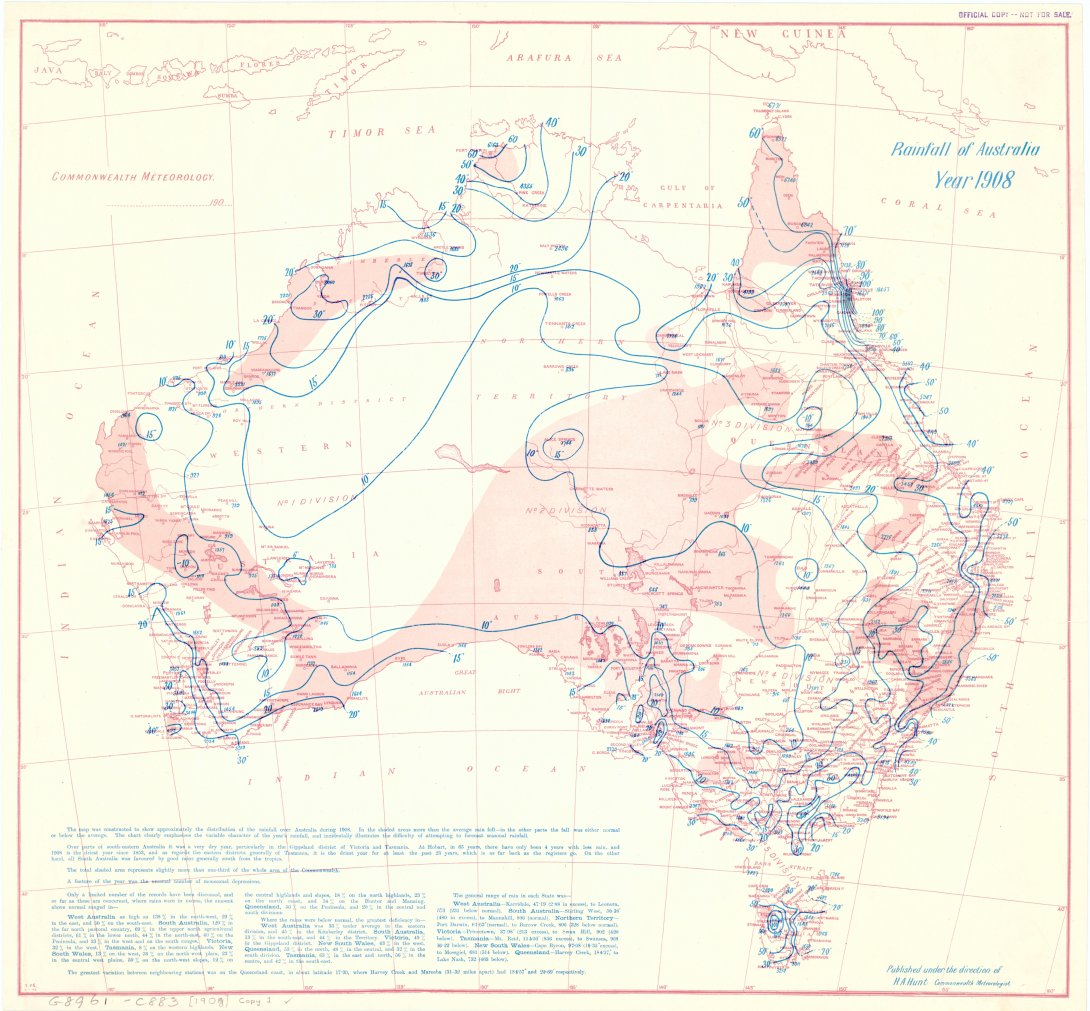
Not sure where to start?
Weather is defined as ‘the state of the atmosphere with respect to wind, temperature, cloudiness, moisture, pressure,’ precipitation and sunshine. Climate is the ‘generalisation of weather conditions of a region… throughout the year, averaged over a series of years’ or, in other words, a region’s long-term weather pattern (Macquarie dictionary [electronic resource]: Australia’s national dictionary online, 2003).
The National Library of Australia provides access to and holds in its collection a wide range of material about weather and climate.
You can find:
- Descriptions of weather and climate in early settlers’ and explorers’ personal accounts
- The manuscript collections of meteorologists and climate activists
- Indigenous Australian weather knowledges
- Pictures of extreme weather events such as droughts and floods
- State and Federal government and parliamentary publications and documents about weather and climate
- Climate maps and charts
- eResources about weather and climate
- Ships logs and historic weather reports
- Weather and climate data
Other institutions and government bodies also provide an array of information about weather and climate in Australia and overseas, including Data and Online Resources.
Rivers: the Lifeblood of Australia
Join Ian Hoskins, author of NLA Publishing title Rivers: The Lifeblood of Australia, and editor Katherine Crane for a discussion exploring the process behind transforming an idea into a publication and learn about Australians' relationships with their waterways.
